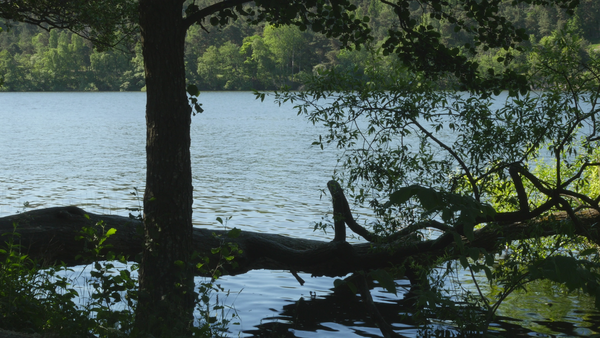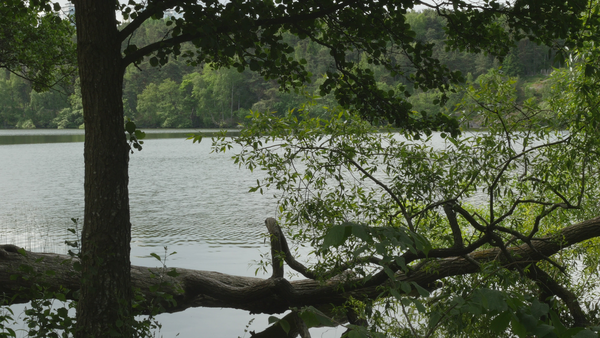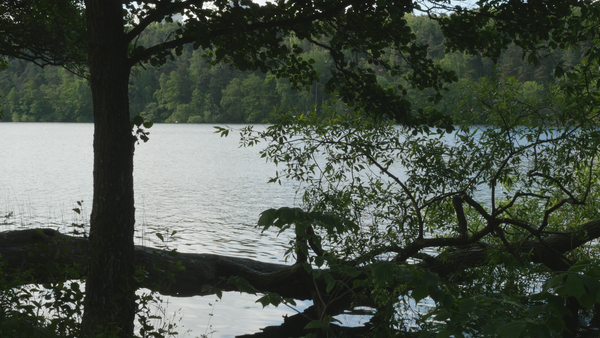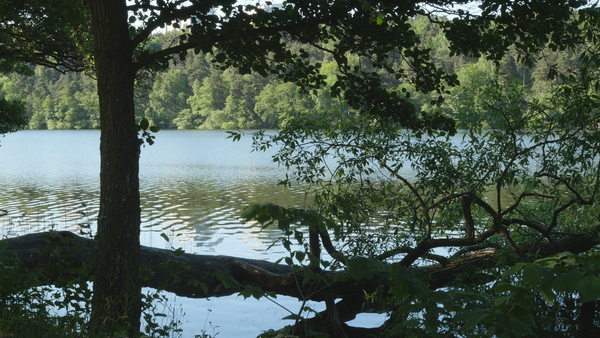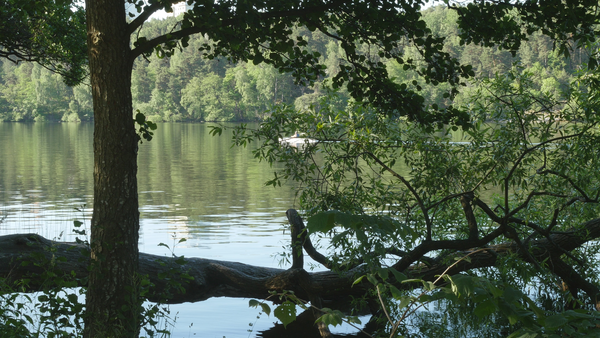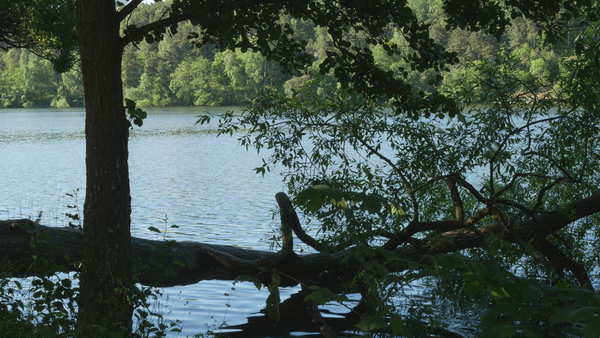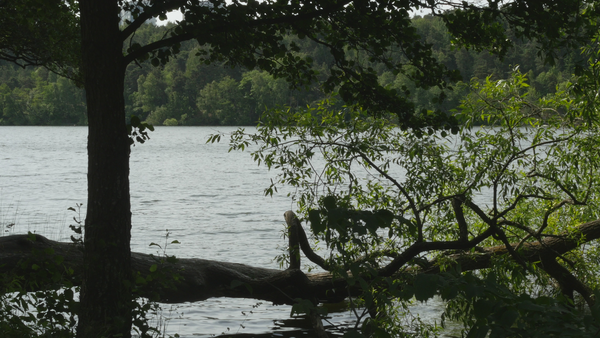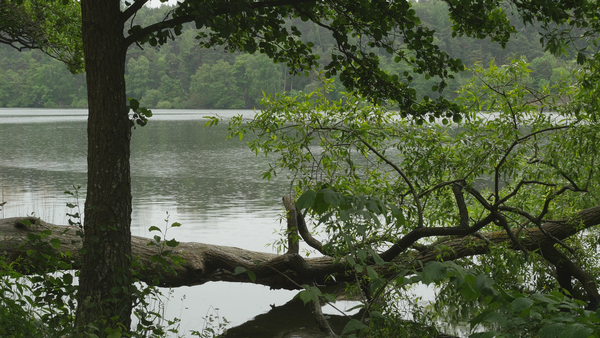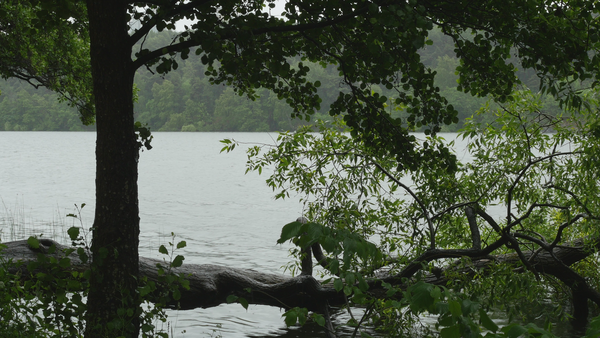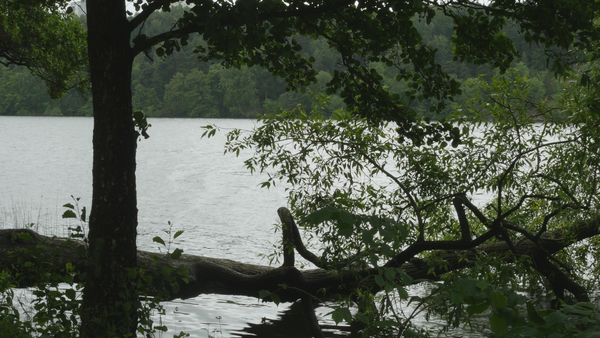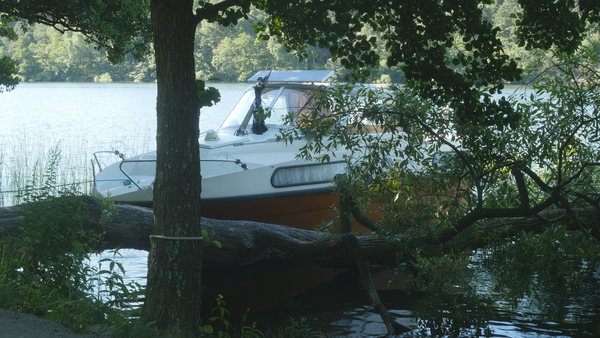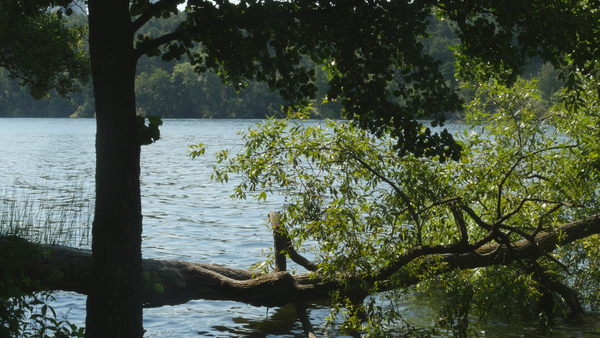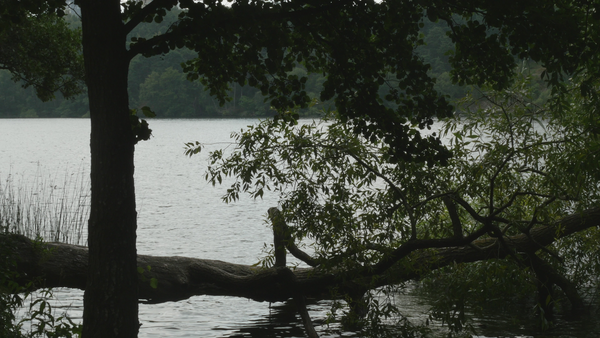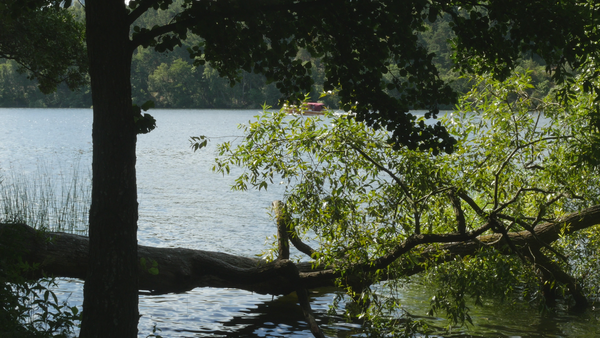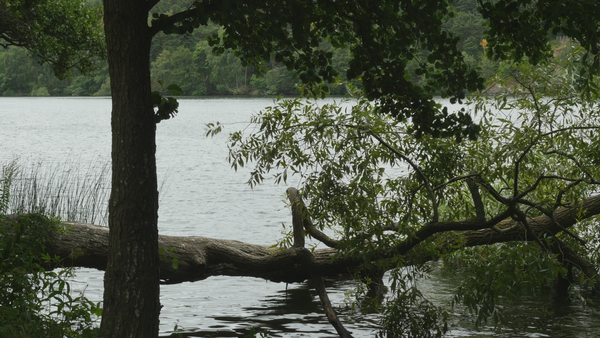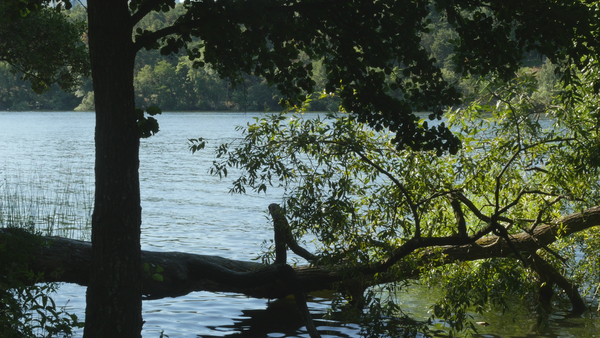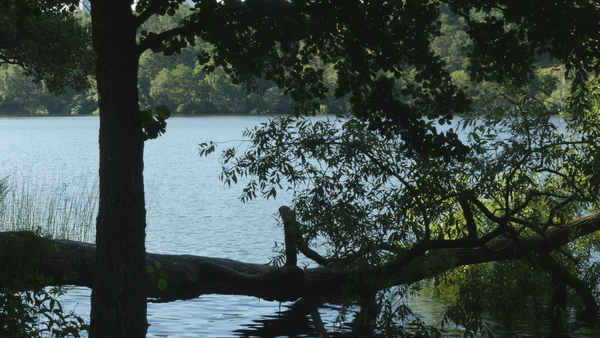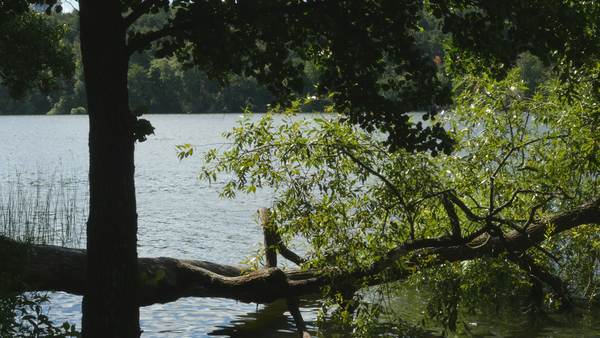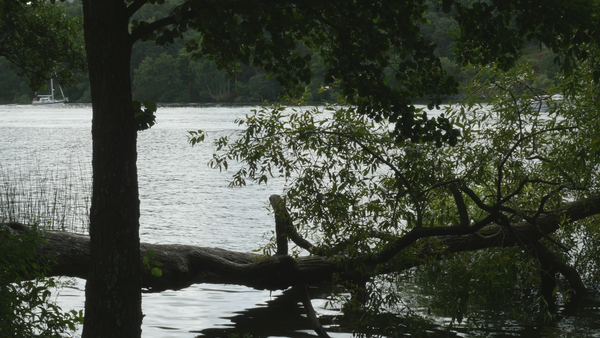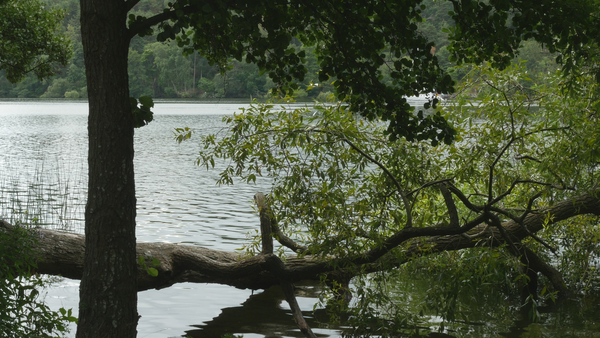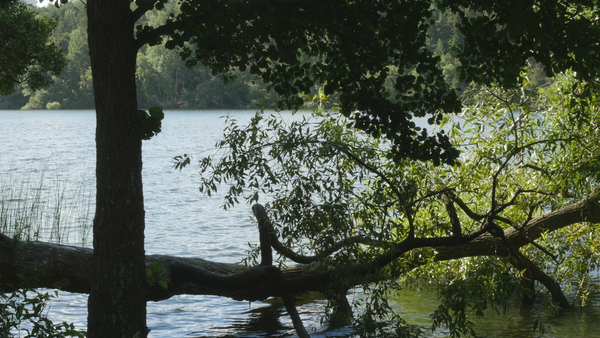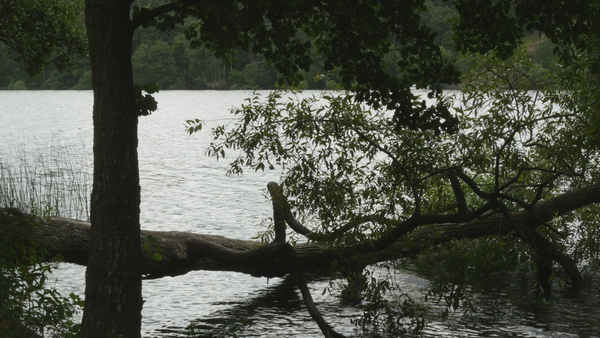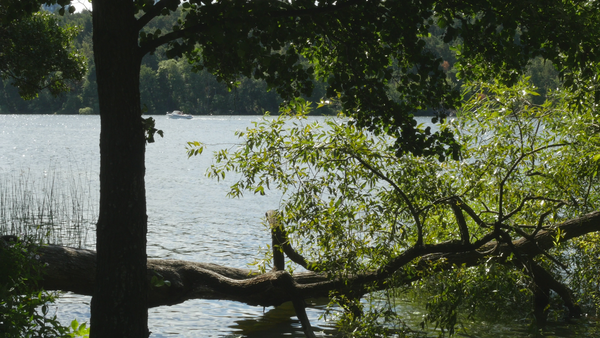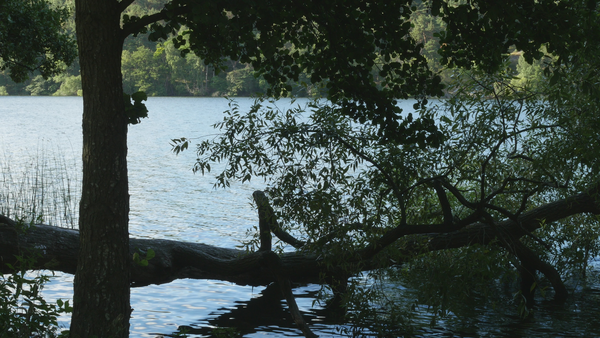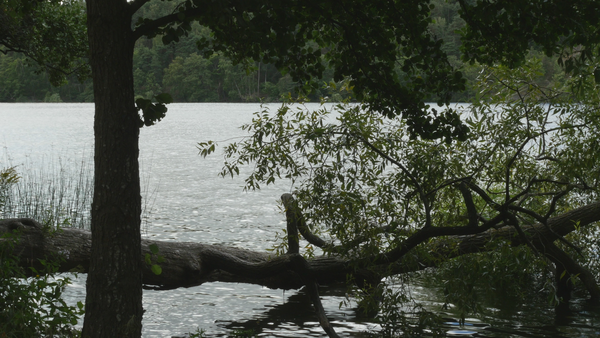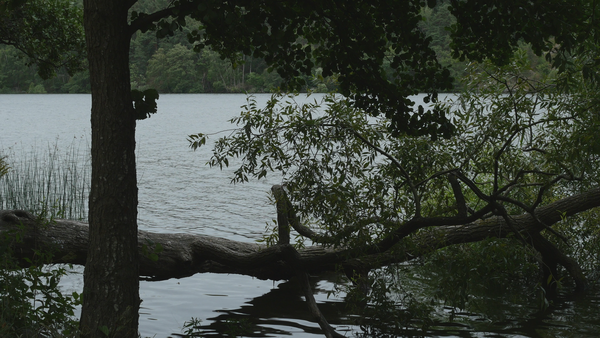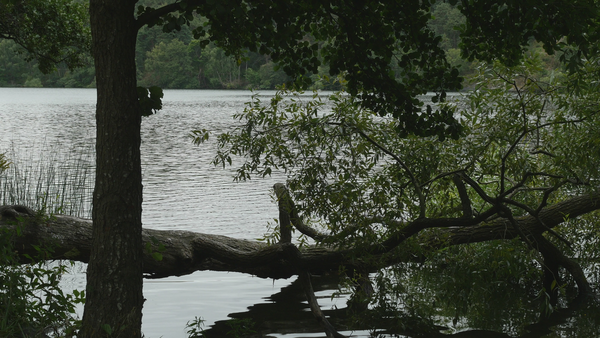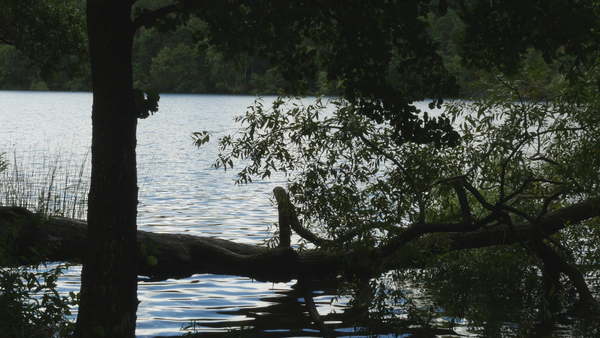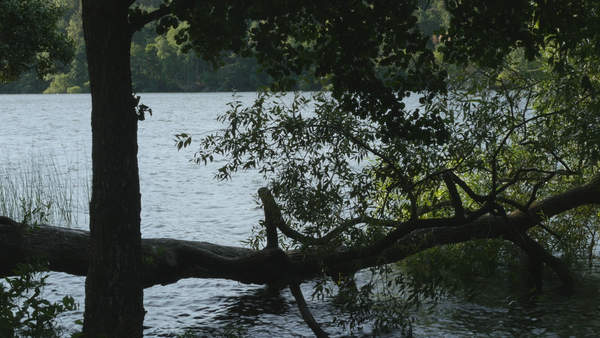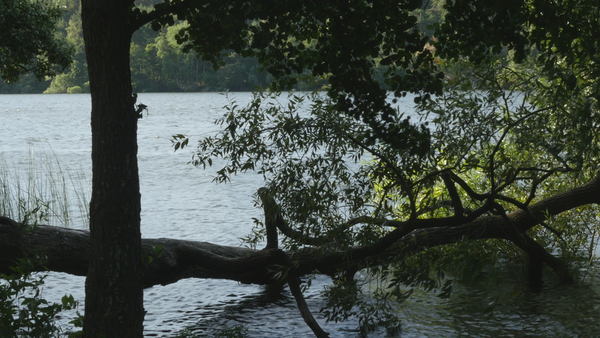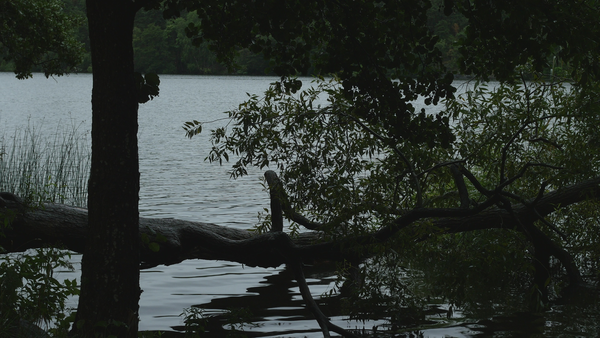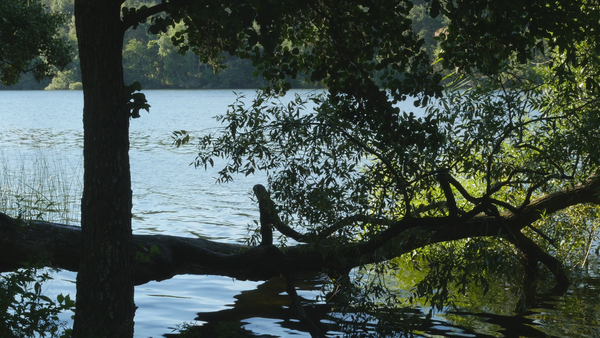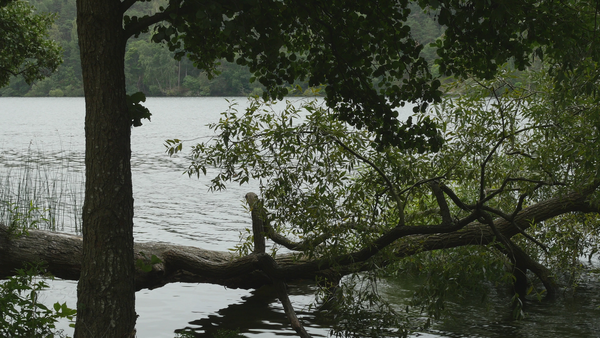To practice, to train, to rehearse – art, or whatever you can imagine. When we speak of a practice it immediately sounds more professional than to practice. Although at heart these terms refer to the same thing: to do something repeatedly, to perform an action again and again, perhaps in various circumstances, to go on… Previously I have mostly written about my projects after they were finished, edited into video works and in most cases also shown at some exhibition. This time, however, I shall try to look at what I have been doing before I know what the result will be, and without knowing whether there will be anything to show as an artwork of it in the end.
Introduction
The examples of my practice that I will describe are basically concerned with art, but also with everyday actions, habits, repetitions, life patterns and changes in them. It is this dimension of routine or habit that I want to explore in this bilingual text. I have written about my work mainly in English, and all notions and designations I have developed are hard to formulate in Swedish. In English, it is difficult to distinguish between the two meanings of practice, which are clear in Swedish (and Finnish): to practice one’s art (att utöva sin konst) and to practice in order to master a skill (att öva sig). To switch language can be helpful in questioning habits and providing a new perspective on what one is doing. The emphasis shifts when I speak of ‘att uppföra landskap’ instead of performing landscape. And to ‘uppträda för kamera’ feels slightly different from performing for camera.
In the examples described in the following I am using the same technique and the same principles that I applied in a twelve-year long project on performing landscape (2002-2014), which resulted in a series of video works called Animal Years. The project is briefly delineated for instance in the text “Performing Landscape for Years” (Performance Research no 19, 2014). The basic elements of the technique consist in visiting the same place once a week for a year, positioning oneself in front of the camera on tripod and trying to recreate the same image, with the same angle and the same framing again and again, in order to show what is changing in the landscape consequent of the weather and seasons. And this rough ‘time lapse’ technique can of course be practiced during shorter time periods as well.
During those twelve years, I experimented with various types of landscapes, albeit on the same island, and various types of actions and poses, like sitting, standing, walking, sitting in a tree, riding a buoy, lying on a stone base, swinging etc., always, however, placed in front of the camera, sometimes hidden, although the main focus of the works was to show the constant changes in the landscape and let the trees, rocks, waves, wind and weather perform. In the experiments made during the winter 2015-16 and the summer 2016 in Stockholm, I chose not to enter the image myself and thus to avoid placing the human figure as the focus of attention. This little difference changes the practice remarkably, at least regarding the result: instead of performances for camera I now have recordings of traditional landscapes.
In this text, I am pondering, among other things, what the fact that I did not place myself in front of the camera this time means for the practice or repetition, and what it leads to in terms of the video material and its significance. This has relevance for the question “how to do things with performance”, currently investigated by a research project I am leading; especially for the aspect of performance that is focused on repeated action rather than its display and on the effects on the performer or doer rather than the viewer. I will compare the two projects that I have called ‘Solsidan’ and ‘Summer at Söder’, with the latter understood as a continuation, variation and simplification of the former, but also as something else altogether. Finally, I will propose that these works can serve as examples of artistic research as a speculative practice.
The crucial question concerns the relationship between practice and routine, between productive and merely habitual repetitions, although all practices are inevitably productive in some sense. Practicing is a must for performing artists, a prerequisite for virtuosity, and necessary for craftspeople as well. The habitual – going to the studio in rain or shine – can be important, not only for a performing artist but for a creative artist as well (if you still want to maintain that historical distinction made between composers and musicians, poets and performers), although that type of routine is not recommended by all. Practicing can be undertaken as a kind of health maintenance work, like yoga or mediation, but it can also become a habit, an unconscious routine, a comforting exercise or safety procedure, perhaps leading to the very opposite of creation and unexpected thoughts.
In my artistic practice I have deliberately strived to create routines based on a simple idea, to build habits, which help me to produce material for artworks almost in passing, as a kind of by-product of living. One can ask, however, whether maintaining such habits or routines is sometimes more concerned with sustaining an artist’s sense of self, creating a feeling of maintaining one’s practice even in those times when there is no great or even relatively well-functioning idea to work on. For example, the practice I developed during the years I was teaching art fulltime and did not have the chance to throw myself into an all-consuming creative process I have continued with also during recent years, when I would have had the possibility to engage in more impulsive modes of working. Of sheer habit, perhaps, or am I stuck with a familiar technique, a dead routine?
The purpose of this text, however, is not to focus on autobiographical critique or self-reflection, but to use my personal experiences as a tool for understanding the differences generated through small shifts in a practice. I am writing in first person singular, because giving account of what I have done by using a passive form or the royal and academic ‘we’ would seem pretentious. By looking closer at the two versions of a practice I have been engaged in and the material produced in that manner, I hope to shed light on the relationship between repetition and practice, practicing and habit. What is the difference between practice as creation of a work and practice as a way of ‘keeping up your practice as an artist’? How does a specific practice develop through various iterations or repetitions? What are the implications of seemingly small changes? Various aspects of a practice have specific implications. Practicing that involves documentation, as in this case, produces a diary of sorts. But whose diary? As much as about my life, this diary tells of the life of the landscape or the trees recorded.
Two examples
The two cases, the video recordings undertaken in the mornings near my temporary homes, in the garden at Solsidan, a suburb of Stockholm (from October 2015 to May 2016), and a park in Eriksdal at Södermalm, in central Stockholm (from June to August 2016), share some basic characteristics regarding schedule. I chose to record an image every morning after spending the night in the place, usually several nights a week. Both projects were based on my previous practice of returning repeatedly to the same site on Harakka Island outside Helsinki, performing for a camera on tripod and creating series of images with the same angle and the same framing, in order for the small changes in the landscape, produced by changing weather and time of year, to come to the fore. In these projects, in Stockholm, I did not perform for the camera, though; I did not enter the image but stayed behind the camera, and let the landscape speak for itself. With one exception, the fourth image at Solsidan, where a swing happened to be there in the garden, almost like an invitation to continue with my practice of the previous year, swinging. All the other images were simply recording the view and its changes, on Söder the passers-by as well. Recording in the morning resembled an experiment on Harakka Island in May 2014, Mornings in May, where I recorded the moment of sunrise every morning without entering the image, an interesting experience, but the resulting video was rather uninteresting. In one sense these projects were taking the idea of performing landscape to its extreme – now the landscape literally played the main part. In another sense the images in Stockholm were sketches or drafts related to my future concern, an artistic research project called "Performing with Plants", since all of them feature trees or shrubs. In describing the projects, I will follow a dual strategy: telling the story of the practice on the one hand and looking at the material as it is ‘now’, during the editing, removed from the experience of the on-site practice of recording, on the other, although editing is a form of practice as well.
Solsidan
While I stayed in my small room at Solsidan, an affluent suburb of Stockholm, in a summerhouse with a somewhat abandoned garden and a view over the bay, I recorded four images of roughly one-minute duration every morning that I spent in the house from October to May (12.10.2015‐29.5.2016.). Sometimes in winter I had to leave so early that the darkness was useless to record. The first image or view was from the terrace door, entering the garden, the second image at the end of the stairs on the way down into the garden and the third image from the entrance to the sauna further down the slope. For the fourth image with the swing I tried to place the tripod as far back and as close to the wall as possible to get as much of the swing into the image, including the swinging movement from left to right, but without too much of the neighbouring house included within the frame. These sites were chosen because I knew from previous years that a clearly designated place for the tripod would help in keeping the image constant, and framing the image in relation to some detail in the landscape would assist with the task, too. Thus, I chose the diagonal pine tree trunk in the first image, the low juniper in the second and the branch of an oak tree in the third as signs for the framing and thus also as the main performers, with a vague idea of a three-channel video installation in mind.
Summer at Söder
The project at Söder was a continuation and variation of my practice at Solsidan, in a park near my new home for the summer at Södermalm in Stockholm, a former working class area near the city centre. This time I chose to record only one image every morning that I stayed there from June to August (4.6.‐31.8.2016). Each morning I walked down to a nearby park, to the path following the shore and placed my tripod next to the path. A tree trunk, a silver willow, was lying horizontally over the water, and another tree trunk standing vertically next to it, an alder, formed a cross with it, with the water as background. I recorded this cross formed by the trunks across the path, thus including all the people passing by in the image, mainly as quick shadows, without heads – running, walking, bicycling, alone or in groups. There was no way I could avoid them, so I decided to record their movement and trust there would be enough sequences without passers-by to choose while editing. Soon, however, I discovered that people passing by where actually quite fascinating, and began to wait for passers-by to show up before starting my recording. I had recorded passers-by before, in Three Shores (2004), as small figures in a distance, whereas the passers-by now were so close they were hardly visible. At first I had some vague idea of entering the image, sitting on the horizontal tree trunk, but soon abandoned it. This was a public space and I wanted to make my image discreetly; moreover, the passers-by served as performers, they provided action enough.
Changes?
Some unexpected changes or surprises form the highlights of a practice like this. For instance, at the end of my stay at Solsidan, one morning in the spring the swing was suddenly gone. In its place a strange-looking mixture of a hammock and a chair was hanging from the tree. My initial impulse was to leave the whole thing at that, but then I decided there were so many mornings left of my stay at the place, that I could just as well record swinging in this strange replacement, too, although it did not look very nice and was difficult to swing in. I did not have to decide at that point whether to use those images in the edited video. Another, less disturbing moment of surprise took place during the Summer at Söder period. One morning when I returned to the shore after a longer trip abroad there was a big boat attached to the alder. It stayed there for a few days and then disappeared again, and after my initial shock I realized it would create a nice event, some action, in the final rather monotonous video.
But will there be a final video? Well, yes, in some form, at least in the form that is included in this exposition, but will I show these videos publicly as artworks? At Solsidan I was focused on creating an artwork and saw it as part of my activities in artistic research as visiting professor at Stockholm University of the Arts, experimenting with my old technique in new circumstances. But at Söder I was no longer sure, now the practice seemed more like an end itself, a nice routine or perhaps simply a habit, a practice I wanted to keep up with to keep up with it…
What is changing, when I am not performing in the image? In terms of the practice, the change is small. I am doing all the same preparations, enjoying or suffering the weather, noticing the changes etc., but instead of stepping in front of the camera as a final gesture, I stay behind. Thus, I do not have to worry about wearing anything special, like using the same scarf. This time I did not bother to think about my clothes while swinging at Solsidan, either, since the swinging was more like a private diary, a remainder from a previous practice.
During the last days of my stay at Söder I already thought about my new home near Humlegården, and took a walk around the park, to see if I could find a tree to work with. Humlegården is centrally located and always full of people, so any kind of practice would not be possible. I was planning to work with plants, so a tree to sit in would be an ideal partner. In any case I felt like returning to performing for the camera, stepping in front of the camera rather than staying behind it. Why? Not so much because of the practice as such, standing behind the camera looking at the view, breathing, sensing, listening, smelling, is just as enjoyable a contemplative experience, but because of the results. In terms of the resulting video, both conceptually and as a viewer experience, the change is more significant. An image without the performance or pose becomes a traditional landscape, and should be interesting in that tradition, or then a recording by a surveillance camera of sorts. And that is not my aim here. Instead of the elements in the landscape or the trees performing becoming the focus of attention, the image as such becomes too important, or so I feel. Whereas in the case where I enter the image myself, the image is a documentation of an action or performance; the repeated action is highlighted and becomes more easily understandable as a practice.
Editing
When looking at the video material recorded at Söder, my primary reaction is irritation at the inconsistency of the framing, which is constantly shifting slightly; the horizon moves up and down and the vertical tree trunk moves sideways between one image and the next, mainly because there was not an exact enough mark for the tripod. I have edited three versions of the material, following the principles I normally use, that is, using the takes in the order they were recorded, combining them with brief crossfades and without any aftereffects. A long version, Summer at Söder - long (58 min 49 sec), contains most of the material; in a short version, Summer at Söder -1 (13 min 20 sec), each image is between 14 and 35 seconds long and includes as many passers-by as possible. In a pair to that version, Summer at Söder – 2, the same duration for each image is used, albeit without any passers-by. Their sounds and footsteps, however, proved hard to eliminate. When showing the short version with passers-by at an event at Muu Gallery in Helsinki (at the event Finished & Last-Minute Videos 7.11.2016) one of the viewers observed that by using a static camera I had adopted the perspective of the trees, a comment I really enjoyed, because it was accurate, while I had not thought of it.
When editing the material from Solsidan, almost a year after it was recorded, I began with the swing, because that seemed the most familiar material. The swinging images needed careful editing for the movement of the swing to seem continuous. The main challenge was to approximate the movement in the images that were very dark. In the first version, all possible material was included, except the images with the strange hammock, and my entering the first image as well as exiting the last one at the end. This resulted in a 53 min 25 sec video Swinging at Solsidan (long). In a short version, Swinging at Solsidan (5 min 16 sec), each image contains only one swinging movement, back and forth, and in another version, Swing at Solsidan (4 min 40 sec), the swing is moving on its own, although not synchronised. Lastly I decided to edit also the images with the hammock, albeit no shorter version nor version with the hammock on its own, and called it In the Hammock (12 min 1 sec), but will not show it anywhere else.
The three views, the main material recorded at Solsidan, were easy to edit; the images were static, so I could choose the duration at will. A version with one minute of each image resulted in rather long videos: Solsidan 1 (long), Solsidan 2 (long) and Solsidan 3 (long), each of them 76 min 10 sec, too large to be included here. Another version with 20 second of each image resulted in Solsidan 1, Solsidan 2 and Solsidan 3, with the duration 25 minutes (25 min 30 sec) each. These shorter ones are included in this exposition, with reduced file size and thus reduced image quality.
Now, when looking at the images they could be placed in relation to each other following at least three principles: in the same chronological order that they were recorded (1,2,3,4), in the geographical order of their placement in the garden seen from the house from left to right (4,2,1,3) and a purely visual order for them to form a triptych (3,2,1) with the fourth image as a separate video. The last version was used in this exposition at first, but changed into the order of recording (1,2,3) for the sake of simplicity.
Thus, I have edited the material into videos, which are included in this exposition. They serve to illustrate and demonstrate the practice I have described. Have I thus taken the final step into a form of artistic research, where an artistic practice serves as a method of data gathering, but no longer produces artworks, where the output of artistic research is no longer art? And what do I do with these data, if I am not compiling them into an artwork that could be interesting to watch outside the context of the practice? Are they to be watched as documentations of a practice, with the practice being the actual artwork? Perhaps we can think that the videos are imbued with the practice, inevitably, since the viewer can imagine the repetition going into the making of them. What the viewer cannot imagine, for instance in the case of Summer at Söder, is the walk down to the park, under the main road, past the school, the colony slots and the lawn, then down the slope to the shore, and back up again, that is, all the spatial and temporal circumstances surrounding the images, which are of course a crucial part of the practice.
The irregularities show the manmade quality of the images, although a time-lapse technique resembles surveillance camera feeds and other types of robotic imagery, although this is a recording, not a live feed. The conceptual meaning of the work changes without the gesture of human presence, although the passers-by in Summer at Söder provide a “found” action to follow. Instead of something that could still be called a marginal form of performance art, I now deal with a basic visual art practice of moving image making. When there is no performer to identify or empathize with, the experience of the viewer changes, too, and the images begin to resemble recordings by surveillance cameras. As a performed action and a practice, however, the processes do not differ that much.
What about art?
Practicing art “as a habit” could perhaps be related to the tradition of Fluxus, and the general aim of much avant-garde movements to merge art and life. Instead of designing coffee pots artists could perhaps design habits. Within Fluxus “everyday actions are framed as minimalistic performances or, occasionally, as imaginary and impossible experiments with everyday situations.” (Higgins 2002, 2). Focusing on performing a task for its own sake can be a gratifying experience. George Brecht described his event scores as “private little enlightenments”. They are prescriptions for present or future moments rather than descriptions of moments in the past and thus almost like pedagogical exercises. They can often be humorous, absurd or paradoxical, something to be experienced, like his No smoking event from 1961: “Arrange to observe a NO SMOKING sign. / smoking / no smoking.” (Friedman 1990,15) or deceptively simple like Yoko Ono’s score from as early as 1955: “Light a match and watch till it goes out” (Iles 1997, 6).
Anna Dezeuze refers to Walter de Maria’s 1960 essay on meaningless work, based on activities to be realized in private only and without a conventional purpose, tasks occurring over time such as putting wooden blocks from one box to another, then putting the blocks back to the original box. Meaningless work can be compared to games without pleasure or rituals without religious or social meaning. “It is because it is gratuitous or purposeless in the conventional understanding of the concept of work that the ‘meaningless work’ can take on relevance for the performer” (Dezeuze 2002, 91). The critical and popular impulse in Fluxus is illustrated by the self-appointed leader George Maciunas and his Fluxmanifesto (1965), in which he states that artists should demonstrate their dispensability and show that anything can substitute art, and that everyone can do it. Art should be unlimited, obtainable by all and eventually produced by all.
Julia E. Robinson compares an event score with a Duchampian readymade. She points out that “if the ready made concept can be thought of as a performative act that defines an object, George Brechts’s event score might be rethought as a performative act that defines a subject” (Robinson 2002, 116). The instruction is addressed to the reader, who becomes a performer, a subject, by interpreting, executing and experiencing the piece. Thus meaningless work could be understood as subject forming activity, a re-creation of subjectivity, perhaps, assisting in the process of subjectification. From todays’ post-humanist perspective a more interesting approach to subjectification would be to invite the landscape to perform, to read these videos as the diary of the pine, the juniper or the oak.
Following Boris Groys, however, who claims that we see more and more art documentation rather than art in galleries to day, these videos could be called art documentation. Art documentation “may refer to performances, temporary installations, or happenings” (Groys 2008, 53) but there is also another type of art documentation.
“Meanwhile, more and more art documentation is being produced that does not claim to make present any past art event. Examples include… artistic interventions in daily life, … processes of discussion and analysis, … unusual living circumstances… and politically motivated artistic actions. [--] Consequently, such art … is not a product or result of a “creative” activity. Rather, the art is itself this activity, is the practice of art as such.” (Groys 2008, 54)
In that case these videos would be evidence of the art that took place in the experience, at the moment of practicing, in the meaningless work or habitual activity on site. But then again, the activity aimed at producing an artwork…
Sustainable routine
Not all practices need to produce art. Allan Kaprow, a contemporary of Fluxus and a propagator of happenings, describes his later experiments with non-art activities, like brushing his teeth attentively every morning for two weeks, and concludes that “ordinary life performed as art/not art can charge the everyday with metaphoric power”. (Kaprow 2003, 222) At the end of the summer I started a new practice, taking part in the project #trashoftheday on twitter. Every morning on my way to the park I tried to find a piece of rubbish, and took a photo of it with my phone before placing it in the nearest rubbish bin, and then tweeted the image with the hashtag. Before this practice had turned into a routine I forgot to do it some mornings, and was immediately worried that it would not develop into a habit if I were not rigorous about it. In this case the purpose of the habit or routine was clearly not to make art, or to produce a diary, but to join a social activity. It was nevertheless documented in some way and included a public gesture to take care of the environment.
As a practice, it was very satisfying too, and resembled my ordinary practice of performing landscape, but was also very different. There is no repetition, no satisfaction in returning to the same spot and seeing all the small changes. In contrast, there is a need to ‘hunt’ for an interesting piece of trash and to worry whether one will find a suitable piece and then the choice; is it this one? There is no temporal dimension, standing next to the camera, waiting for a minute or two, registering what the camera registers. On the contrary, finding the trash, taking a snapshot and carrying it to the next bin is a quick action, and the increased sensitivity to the environment occurs before the act, while looking around searching and then choosing the trash. Regardless of the obvious usefulness of this kind of practice I did not continue it for long.
Creating habits is a way of creating one’s life. Probably you cannot get rid of a habit, especially if it is very in-grown or like an addiction. But you can create new habits to replace the old ones. That is one of the tasks for art, too, to aid in producing habits that are meaningful and life sustaining. Or rather sufficiently disturbing?
What about research?
When research involves artistic practice, terms formed around the notion of ‘practice’ are often used, such as practice-based, practice-led and practice-as-research. This is especially popular in fields related to performing arts and is evident in the names of anthologies such as Practice as Research – Approaches to Creative Arts Enquiry (Barrett & Bolt 2007), Practice-as-Research in Performance and Screen (Allegue et al. 2009), Practice-led Research, Research-led Practice in the Creative Arts (Smith & Dean 2009) and Practice as Research in the Arts – Principles, Protocols, Pedagogies, Resistances (Nelson 2013). Sometimes the term ‘performance’ is used, as in Mapping Landscapes for Performance as Research (Riley & Hunter 2009). The use of the term ‘practice’ can be criticized for creating a false practice-theory dichotomy, or for failing to distinguish artistic practice from other practices. Regardless of this critique, within contemporary art the shift in emphasis from an artistic practice aiming first and foremost at producing an artwork into an activity undertaken mainly as an exercise, a performance, or a contemplative practice, is a strand in the general trend since the 1960s, accentuated in this century, towards valuing the ‘working’ of art above the artwork as an object. This trend can be related to research as well, and to the discussions about the impact of research, as Barbara Bolt has done:
“Whilst the terms are often used interchangeably, the artwork is not the same thing as the work of art. In this context, the artwork can be defined as the production – the novel, poem, screenplay, performance, painting, film, installation, drawing or event that has emerged in and through practice – it is what is published or exhibited or performed. The work of art is the work that the artwork does; it is the movement in concepts, understandings, methodologies, material practice, affect and sensorial experience that arises in and through the vehicle of art and the artwork. The work that art does is its performative quality. This can relate to the process of making the artwork and the effects for the artists and for the field, and/or to the effects that the artwork may generate in the world.” (Bolt 2014, 29-30.)
This important division into what the work is and what it does, does not, however, distinguish between working (the practice), and the work (the result of that practice), but only notes that both have effects. It seems research that entails an attempt to articulate and theorize an on-going practice, which is based on acquired (and thus more or less unconscious) skills, has often a different focus and uses different methods compared with research that tries to develop and conceptualize an artwork or a new type of design product, and explain the route to that result. We could distinguish a) product-oriented or object-led artistic research, focused on the creation of an artwork or a design product from b) practice-based or practice-led research, engaged with an on-going practice, often with a practical, critical or emancipatory knowledge interest. We can further simplify the idea and say that artistic research can be a) product-oriented, when the main goal is the creation of an artwork, or b) practice-led, when a particular form of practice is more important than a specific artwork or performance. (Arlander 2011, 321.) This distinction could be attributed to traditions within the creative and the performing arts respectively. Such a division, however, is contested by contemporary art, which often focuses on processes and interaction rather than products and finished works. And of course, practices can be developed and reified into object-like methods.
Besides this difference in emphasis between practice and product there is often a difference in approach regarding time. The research process can be c) developmental, striving to create something new. It can also be d) reflective, trying to understand and articulate what one has already done. Either approach, or rather, mixtures between them, with emphasis on either aspect, can be found within artistic research, although you would expect the developmental to dominate. For the critically minded, however, the reflective approach provides a space for questioning and criticizing the ingrained conventions of the art world. For the more conservatively inclined, it offers an opportunity to formulate and document tacit knowledge and to articulate methods within an existing tradition.We can form a classical field combining these four aspects:
Product-oriented (a) Practice-led (b)
Developmental (c) (ac) (bc)
Reflective (d) (ad) (bd)
Creating this kind of typology can seem meaningless, like a useless habit borrowed from social sciences, but in some instances, it could be clarifying, especially if we remember that most cases of artistic research include all these aspects in some degree. As generic examples we could imagine a research project aiming at a technological innovation, like a flying carpet (ac) or a new method for singing together with birds (bc), a research project trying to understand the responses to an artwork in public space (ad) or criticizing a traditional teaching technique (bd). In real life clear-cut examples are hard to find; nearly all research projects, for instance, include a reflective or backward looking component simply because they are reported.
Returning to my practice described above, focusing mainly on the video works, would make the approach more product-oriented (a) while emphasizing the practice, as I have done here, exemplifies a more practice-led (b) approach. In terms of temporal orientation, the practice is not primarily developmental (c), no new innovations are aimed at. Although my goal was to write before I knew what the result would be, parts of this text are necessarily written as reflections (d), after the practice of recording and editing. Unlike many of my previous attempts, which generally tended to reflect upon already finished works (ad), I have here tried to write about an on-going practice, although not necessarily with a developmental (bc) agenda, but have nevertheless ended up writing after the fact. As an overall assessment this research report could probably be characterised as practice-led and reflective (bd).
Speculative practice?
Surprisingly, there are few typologies created around artistic research; most categorisations concern the various relationships of art and research, often assuming a dichotomy, like “The Three Configurations of the Studio-Art PhDs” (Elkins 2009), creating a third zone (Biggs & Karlsson 2011) or some form of boundary work (Borgdorff 2012) between the two, or then suggesting various combinations: research interpreting art, art interpreting research, art placed in a research context, research placed in an art context, art contributing to research, research contributing to art, and so on (Keinonen 2006). Other typologies relate to methodology in a more general sense adding a third dimension to quantitative and qualitative research, such as performative research (Haseman 2006), arts-based research (Leavy 2009) or conceptual research (Smith & Dean 2009). In many cases, artistic research can be understood as an interdisciplinary and transdisciplinary activity; different inter- or transdisciplinary entwinements lead to different types of artistic research (Arlander 2016).
Often artistic research appears to find contact points with philosophical study, and to share its speculative freedom, despite inevitably also having an empirical dimension. We can think of artistic research as a speculative practice, not necessarily linked to speculative realism in philosophy (Meillassoux 2012), but as an activity engaged in imagining alternatives, as a form of speculation through practice. Not only the practice-led and developmental alternatives in the field above, but also all other forms of artistic research could be called speculative practices. The point is that the speculation takes place with the help of and through practice.
It is relatively easy to see the interdisciplinary and transdisciplinary aspects of the practice in my examples (between disciplines like performing arts and visual art, reaching out beyond academia to the art world and to the everyday), but how could it be considered speculative? What would be the speculative or imaginative dimension, searching for alternatives, in recording the same view repeatedly? Setting up a quasi-experimental situation where one can expect changes to take place is of course a form of speculation or guesswork in a literal sense. Working with the agency of technology, the automatic functions of the camera, and letting the elements of the environment perform for them, means reducing the human interference to some extent, and could be considered speculative in the sense of reaching beyond a human understanding of the world. The how of agency resided in the specific details of the practice, with the camera, the tripod, the tree trunks and the weather as the main intra-acting components (Barad 2012, 55-56). In theory, no human activity was needed to produce the images. The practice was nevertheless rather human centred, because the camera did not choose the site for the tripod, nor the framing of the image, and did not decide on the moments of recording either.
The practice in my example seems documentary rather than speculative in character – if we understand speculative in the sense of imagining, of envisioning alternatives – because it was recording the action and emphasizing the perceived or the sensory rather than the imagined. It nevertheless had a speculative dimension as well, creating a routine, a basis, for the unexpected to appear. One documentary aspect is my way of handling the results of these explorations, not using only the unforeseen image or the interesting exception; rather, by maintaining and showing every repetition I am foregrounding the practice itself as a performance and the resulting video as witness to and evidence of the action. Thus, calling these projects examples of speculative practice, the emphasis must be on the word practice. Rather than speculate on alternative possibilities as a mental exercise, the speculation takes place by repeatedly creating the conditions for alternatives to appear, or not to appear, in and through the practice.
See the video material:
References
Allegue, L., Kershaw, B., Jones, S. and Piccini, A. (Eds.) 2009. Practice-as-Research in Performance and Screen. Basingstoke: Palgrave Macmillan.
Arlander, A. 2016. “Artistic Research and/as Interdisciplinarity – Investigação em Arte e/como Interdisciplinaridade.” In Almeida, C. & Alves, A. (Eds.) Artistic Research Does #1. Porto: NEA/12ADS Porto: Research Group in Arts Education/ Research Institute in Art, Design, Society; FBAUP Faculty of Fine Arts University of Porto, pp. 1-27.
Arlander, A. 2014. “Performing Landscape for Years”. In Performance Research Special issue: On Time. Volume 19-3, pp. 27-31. Aberystwyth: Centre for Performance Research, Taylor & Francis.
Arlander, A. 2011. “Characteristics of Visual and Performing Arts”. In Biggs, M. & Karlsson, H. (Eds.) The Routledge Companion to Research in the Arts. London & New York: Routledge, pp. 315-332.
Barad, K., Dolphijn, R. and Van der Tuin, I. 2012. “Matter feels, converses, suffers, desires, yearns and remembers. Interview with Karen Barad.” In New Materialism: Interviews & Cartographies. Ann Arbor, MI: Open Humanities Press, pp. 48–70. (Available at: http://quod.lib.umich.edu/o/ohp/11515701.0001.001/1:4.3/–new-materialism-interviews-cartographies?rgn=div2;view=fulltext)
Barrett, E. and Bolt, B. (Eds.) 2010 [2007]. Practice as Research: Approaches to Creative Arts Enquiry. London and New York: I.B. Tauris.
Biggs, M. and Karlsson, H. 2011. “Evaluating Quality in Artistic Research.” In Biggs, M. & Karlsson, H. (Eds.). The Routledge Companion to Research in the Arts. London and New York: Routledge, pp. 405–424.
Bolt, B. 2014. “Beyond Solipsism in Artistic Research: The Artwork and the Work of Art.” In Barrett, E. and Bolt, B. (Eds.) Material Inventions. Applying Creative Arts Research. London & New York: I.B. Tauris, pp. 22-37.
Borgdorff, H. 2012. The Conflict of the Faculties. Perspectives on Artistic Research and Academia. Leiden: Leiden University Press.
Dezeuze, A. 2002. “Origins of the Fluxus Score.” Performance Research 7: 3, pp. 78–94.
Elkins, J. 2009. “The three Configurations of Studio-Art PhDs.” In J. Elkins (Ed.) Artists PhDs – On the New Doctoral Degree in Studio Art, Washington DC: New Academia Publishing, pp. 145-165.
Friedman, K. 1990. Fluxus Workbook, Oslo: El Djarida.
Groys, B. 2013. [2008] Art Power. Cambridge, Massachusetts & London, England: MIT Press.
Haseman, B. 2006. “A Manifesto for Performative Research.” Media International Australia Incorporating Culture and Policy: Quarterly Journal of Media Research and Resources. 118, pp. 98-106.
Higgins, H. 2002. Fluxus Experience. Berkeley: University of California Press.
Iles, C. 1997. “Yoko Ono”. In Yoko Ono: Have you seen the horizon lately. Oxford: Museum of Modern art.
Kaprow, A. 2003. Essays on the Blurring of Art and Life. Berkeley: University of California Press.
Keinonen, T. 2006. “Fields and Acts of Art and Research.” In Mäkelä, M. and Routarinne, S. (Eds.) The Art of Research. Research Practices in Art and Design. Helsinki: University of Art and Design, pp. 41-58.
Leavy, P. 2009. Method Meets Art – Arts-Based Research Practice. New York and London: The Guilford Press.
Maciunas, G. 1965. Fluxmanifesto. (Accessed 16.3.2017 at
http://id3419.securedata.net/artnotart/fluxus/index.html )
Meillassoux, Q., Dolphijn, R. and Van der Tuin, I. 2012. “There is a contingent being independent of us, and this contingent being has no reason to be of a subjective nature. Interview with Quentin Meillassoux.” In New Materialism: Interviews & Cartographies. Ann Arbor, MI: Open Humanities Press, pp. 71–81. (Accessed 16.3.2017 at: http://quod.lib.umich.edu/o/ohp/11515701.0001.001/1:4.3/–new-materialism-interviews-cartographies?rgn=div2;view=fulltext )
Nelson, R. (Ed.) 2013. Practice as Research in the Arts – Principles, Protocols, Pedagogies, Resistances. Basingstoke: Palgrave Macmillan.
Riley, S. R. and Hunter, L. (Eds.) 2009. Mapping Landscapes for Performance as Research – Scholarly Acts and Creative Cartographies. Basingstoke: Palgrave Macmillan.
Robinson, J.E. 2002. “The Brechtian Event Score – a Structure in Fluxus.” Performance Research 7: 3, pp. 111–123.
Smith, H. and Dean, R.T. (Eds.) 2009. Practice-led Research, Research-led Practice in the Creative Arts. Edinburgh: Edinburgh University Press.

